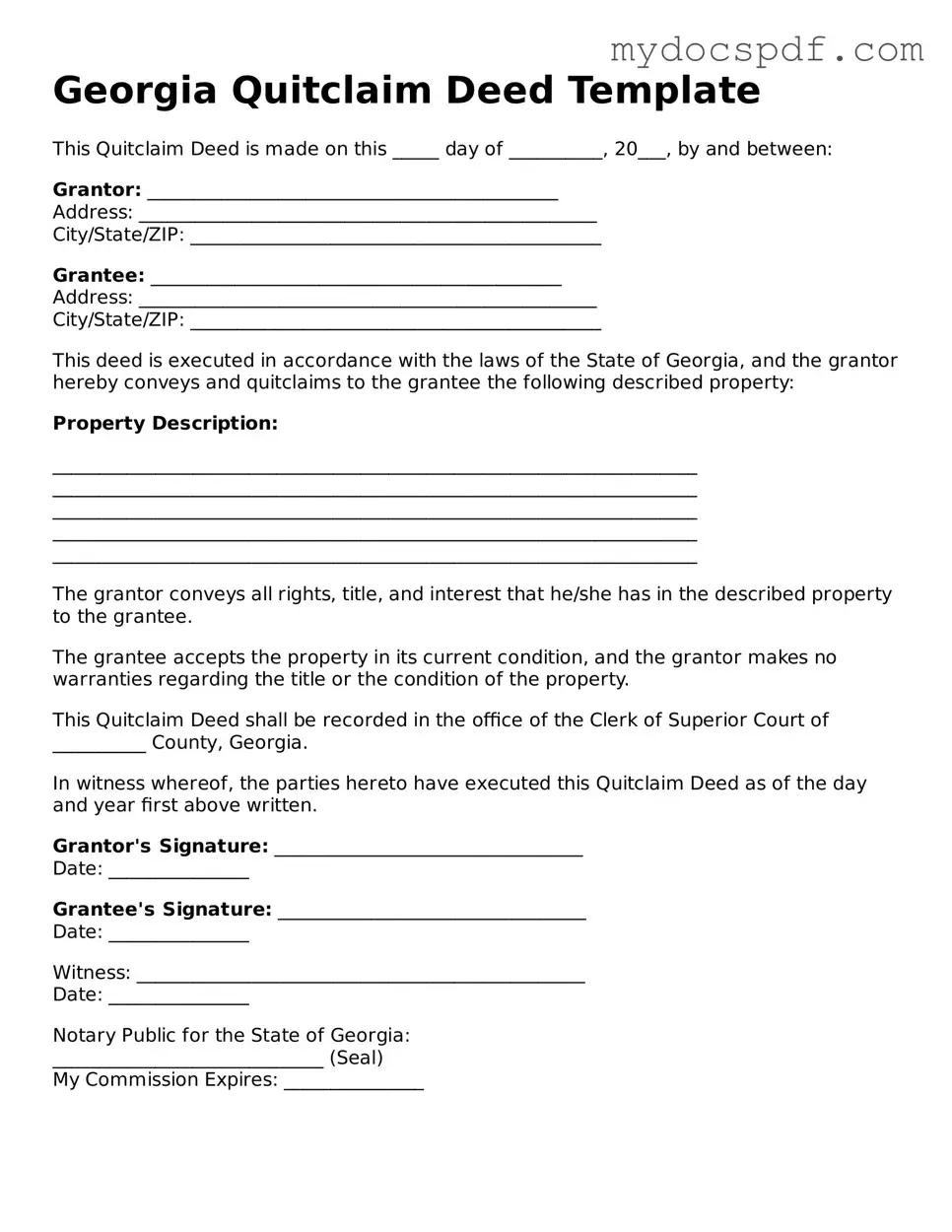Georgia Quitclaim Deed Template
This Quitclaim Deed is made on this _____ day of __________, 20___, by and between:
Grantor: ____________________________________________
Address: _________________________________________________
City/State/ZIP: ____________________________________________
Grantee: ____________________________________________
Address: _________________________________________________
City/State/ZIP: ____________________________________________
This deed is executed in accordance with the laws of the State of Georgia, and the grantor hereby conveys and quitclaims to the grantee the following described property:
Property Description:
_____________________________________________________________________
_____________________________________________________________________
_____________________________________________________________________
_____________________________________________________________________
_____________________________________________________________________
The grantor conveys all rights, title, and interest that he/she has in the described property to the grantee.
The grantee accepts the property in its current condition, and the grantor makes no warranties regarding the title or the condition of the property.
This Quitclaim Deed shall be recorded in the office of the Clerk of Superior Court of __________ County, Georgia.
In witness whereof, the parties hereto have executed this Quitclaim Deed as of the day and year first above written.
Grantor's Signature: _________________________________
Date: _______________
Grantee's Signature: _________________________________
Date: _______________
Witness: ________________________________________________
Date: _______________
Notary Public for the State of Georgia:
_____________________________ (Seal)
My Commission Expires: _______________
